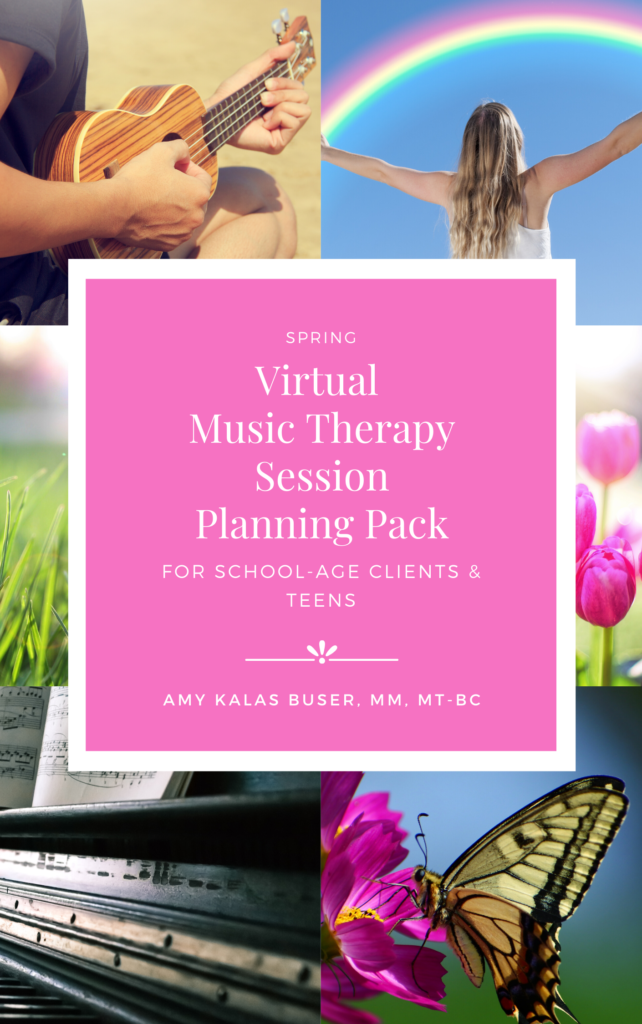
Last week, I shared one of my favorite Zoom tools to use during telehealth music therapy sessions – the Screen Share feature.
I use it multiple times per session to share lyrics, rhythms, musical game questions, and visuals, and to show GarageBand when I’m working on projects with my clients.
This week, I’m going to highlight another feature of Zoom that you may know about but not be intentionally utilizing.
That feature is the Chat Box.
You’ll find it on the bottom of your screen, next to the Screen Share button.
If your group sessions are anything like mine, there are often times when the noise level gets high (I’ve had up to 24 participants in some group sessions!)
I’ll usually mute everyone, so they can hear me better, but that in turn makes it hard to hear their responses when I ask a question.
Enter the Chat Box.
If I ask a question (for example, during a song discussion about this American Authors song), I will ask my teen clients, or the person who is helping them, to type the answer.
This way, I can read through the answers and acknowledge each one, without having the ask clients to raise hands, wait with their hand up, then mute and unmute and mute and unmute (you’ve been there, right?!)
I’ve also found the Chat Box feature helpful when a parent, teacher, or client has some input that will help the session run more smoothly. For example…
“Can you mute ______ because there’s some background noise?”
“_____ has been raising his hand and has something to say.”
“Can we dance to Meghan Trainor at the end?”
I love the Chat Box feature because it helps my virtual sessions run more smoothly, and helps ensure everyone has a chance to participate and be heard.
I’d love to hear if and how you’re utilizing the Chat Box feature in your teletherapy sessions, too. Leave a comment below to let us know!
And if you need new creative ideas for your virtual (or in-person!) sessions, check out the Virtual Music Therapy Session Planning Pack. It’s complete with visuals, picture cards, musical game templates and samples, sample listening guides, and MP3s.




Leave A Comment